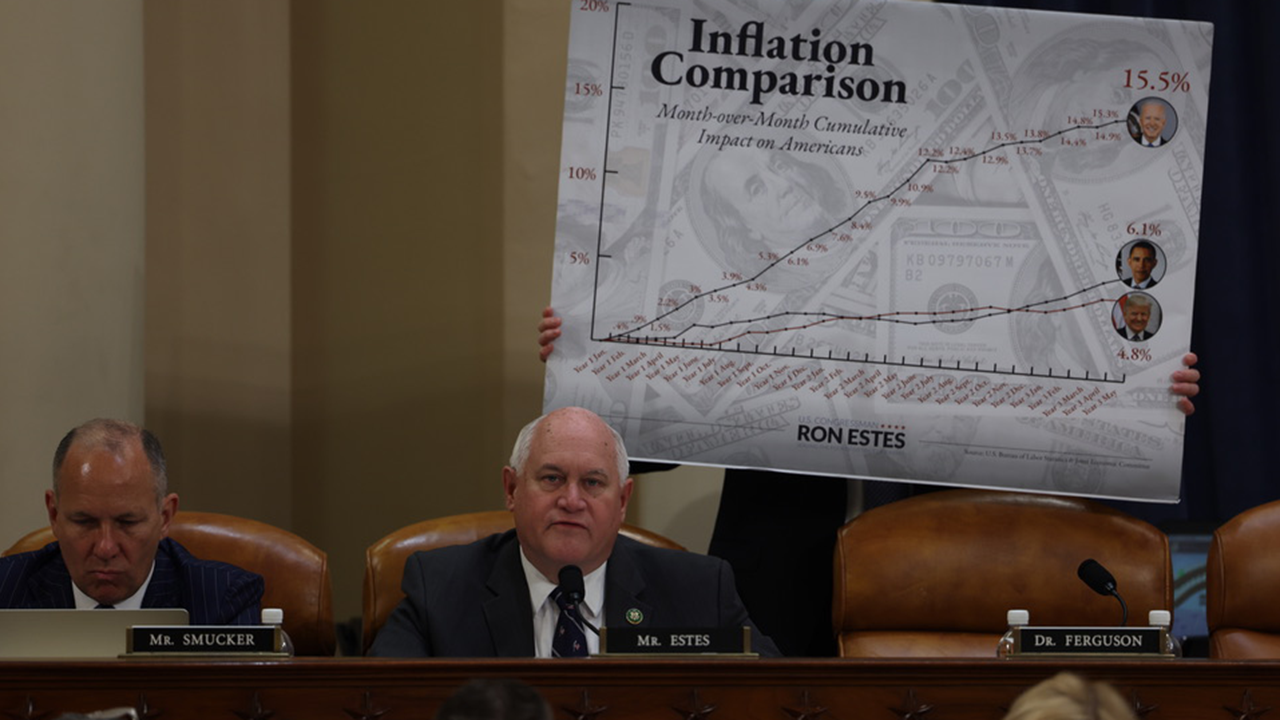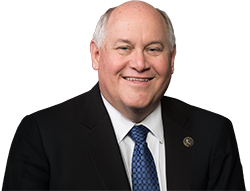WASHINGTON – Today Rep. Ron Estes (R-Kansas) offered remarks in support of his R&D expensing bill during a Ways and Means Committee markup of H.R. 3938 – the “Build It in America Act” – that was later reported out of committee. He introduced the legislation earlier this year with Ways and Means colleague Rep. John Larson (D-Connecticut).
“The American Innovation and R&D Competitiveness Act is the right solution to help small and family businesses in our districts, and with such strong bipartisan support, it’s clear that this bill shouldn’t be used as a political trade for partisan legislation,” said
Rep. Estes. “With more than half of my colleagues on the other side of this committee already supporting this legislation, there is no excuse to hold up this critical tax provision.”
On Tax Day, April 18, Reps. Estes and Larson
reintroduced H.R. 2673 – the American Innovation and R&D Competitiveness Act. They were joined by Reps. Darin LaHood (R-Illinois), Suzan DelBene (D-Washington), Jodey Arrington (R-Texas), Jimmy Panetta (D-California) and 60 additional original cosponsors, with more than 100 cosponsors now on the bill. Rep. Estes also
delivered remarks on the House floor in April, and
numerous organizations offered their support following the bill’s introduction.


Download Rep. Estes’ testimony in committee
Full Remarks:
I appreciate you including my research and development bill as part of this package. It’s an important part.
Families and small businesses have suffered for more than two years under the failed economic policies of this administration. As we can see by this chart, inflation is up 15.5% since Joe Biden took office in January of 2021, much higher than either of his two predecessors over the same period of time.
It's clear – Americans need relief and economic growth. And that’s what we’re doing here today.
Now we’ve heard the demagoguing from my colleagues on the other side about this economic growth package, which contains common sense policies that some of my colleagues actually support.
One of those is the American Innovation and R&D Competitiveness Act. I reintroduced this common sense bill on Tax Day of this year with my colleague John Larson, along with Representatives LaHood, DelBene, Arrington, Panetta and 56 other original cosponsors. The bill continues to gain support and has 101 cosponsors today – evenly split between Republicans and Democrats. And, of the 18 Democrats on this committee, 11 are also cosponsors.
The bill is straightforward. It corrects a tax issue businesses face when conducting research and development. The American Innovation and R&D Competitiveness Act allows for immediate expensing on eligible R&D costs, bringing us back to where we were just a few years ago and securing U.S. dominance in research and development.
Full expensing for R&D was allowed through the end of 2021. However, with the beginning of 2022, businesses have been required to spread out or amortize R&D expenses over five years for domestic R&D or 15 years for foreign R&D. As we’ve heard from our field hearings throughout the country, this practice is not sustainable for businesses of any size – big or small.
Instead, as the Association of Equipment Manufacturers said, the bill “offers a much-needed boost for the equipment manufacturing industry at a time when America faces adverse inflation and strained supply chains.”
AEM isn’t the only organization praising the bill. The National Taxpayers Union featured this legislation on their “no-brainer” list in 2020. The list is a collection of 10 bills that NTU deems to be “no-brainer” bills that have bipartisan support and should be easily passed in Congress. Although they only recognize bills once, they included this legislation as an honorable mention the following year, and sent a letter of support to members of the House Ways and Means in this Congress. I would also like to submit for the record a letter from the R&D Coalition, highlighting the importance of R&D expensing.
All of these organizations know that where R&D occurs, jobs and economic opportunities follow. And, this isn’t just about major corporations. R&D supports businesses of all sizes. According to the R&D Coalition, about 15% of private U.S. R&D investments are made by small businesses with fewer than 500 employees.
Right now, the United States is lagging behind in R&D – a trend that’s been happening for a while. According to the R&D Coalition, the U.S. share of global R&D investments in 2019 was 30%, down from 40% in 1999. Unlike the United States, China’s global share of R&D investment has gone up – it was 24% in 2019, a big jump from just 5% in 2000. That means China’s R&D investments have increased 400% in just two decades.
And here’s how they changed the trajectory of their R&D presence. China has implemented a deduction of up to 200% on eligible R&D investments. So literally, they are paying 10 times the credit for companies to come do R&D in China.
Without an incentive for homegrown R&D, the U.S. also loses out on creating new jobs. The R&D Coalition says, “For every $1 billion of U.S. R&D spending, 17,000 jobs earning $1.4 billion are supported in the United States.” They also note that unless the R&D amortization policy is reversed, the U.S. stands to lose 410,000 jobs, $57.5 billion in labor income, and $71 billion in R&D spending over the next 10 years.
The American Innovation and R&D Competitiveness Act is the right solution to help small and family businesses in our districts, and with such strong bipartisan support, it’s clear that this bill shouldn’t be used as a political trade for partisan legislation. With more than half of my colleagues on the other side of this committee already supporting this legislation, there is no excuse to hold up this critical tax provision.
Today’s research and development dollars create tomorrow’s jobs, and we need to keep R&D dollars inside our country, where they can help strengthen American businesses and workers.
I want to thank my colleague Congressman Larson for working with me on this legislation in this Congress and in previous Congresses. Now is the time for the American Innovation and R&D Competitiveness Act to become law.








